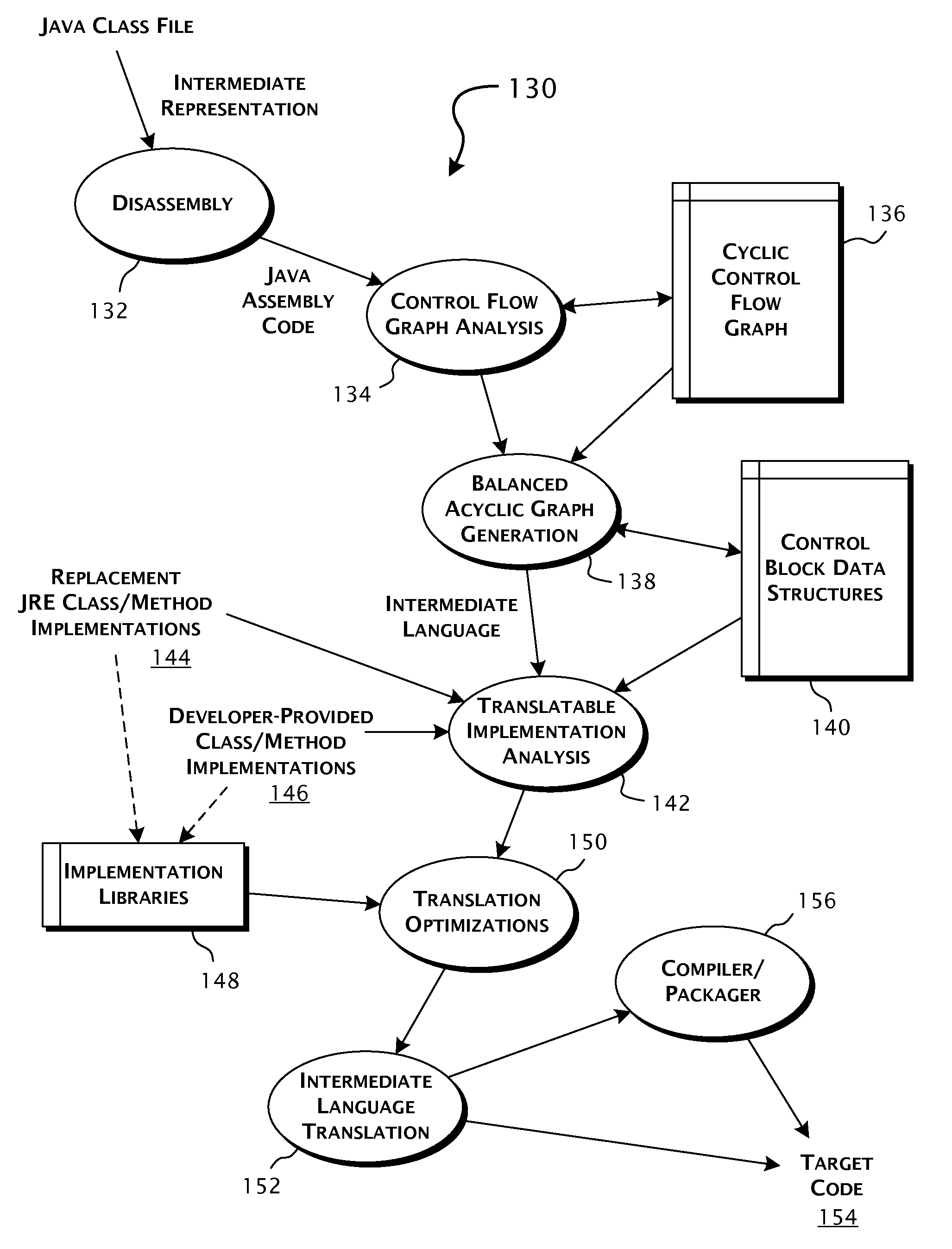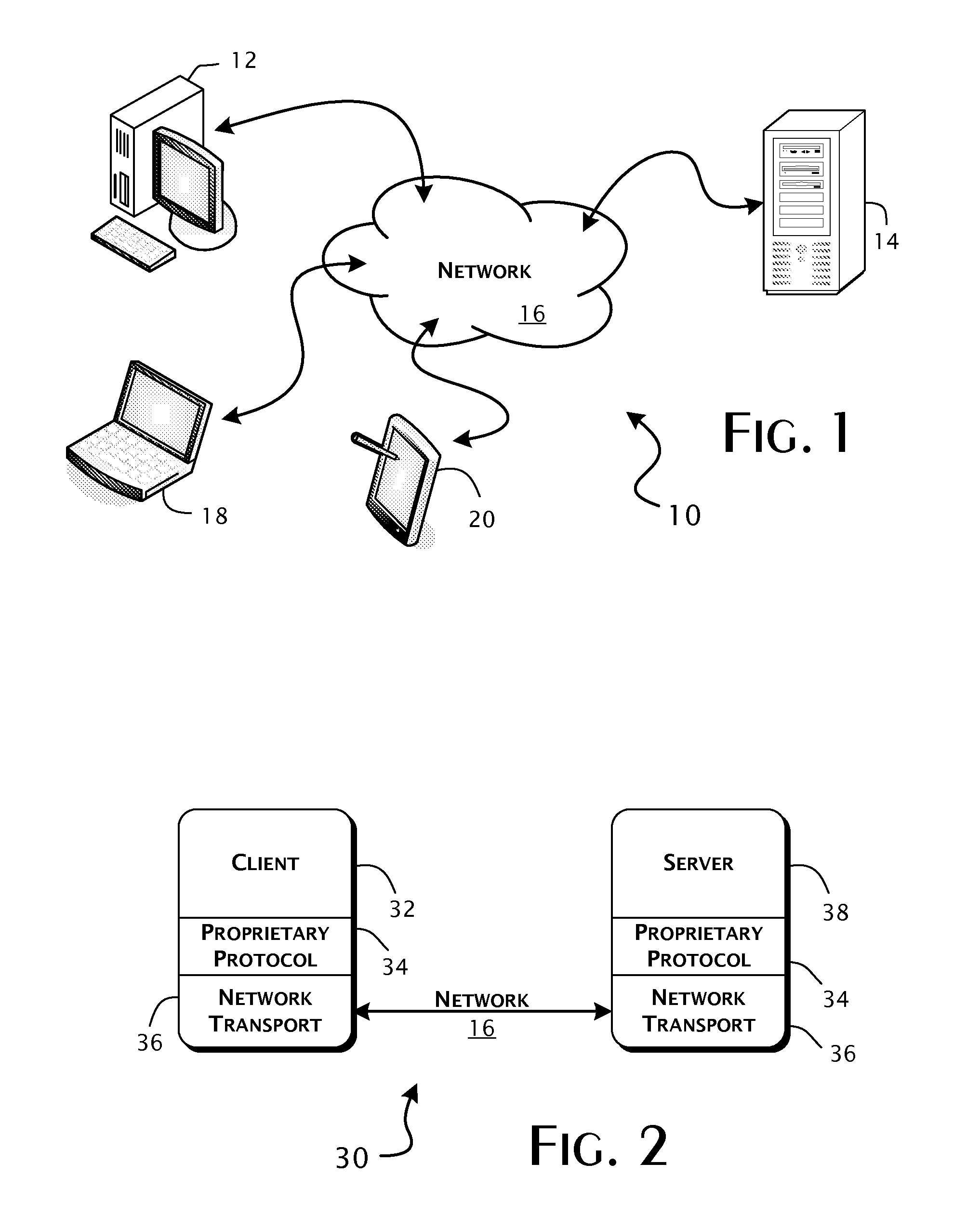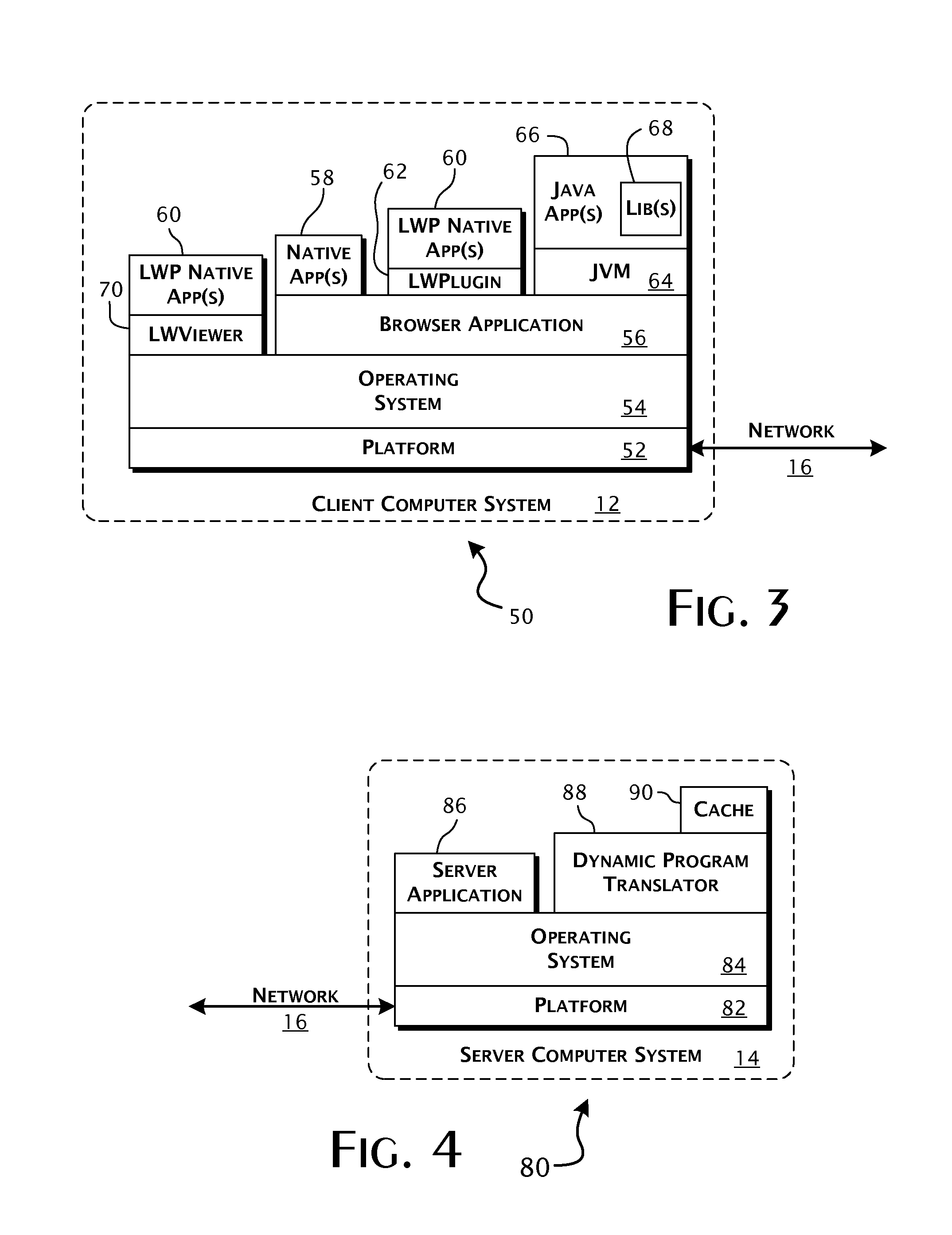System and methods for distributed execution of computer executable programs utilizing asymmetric translation
a distributed execution and executable program technology, applied in the direction of program code transformation, computing, instruments, etc., can solve the problems of complex software systems, insufficient configuration presumptions and policies, and a large number of problems, so as to avoid performance penalties, avoid the presence and version of jvm issues, and efficiently account for differences
- Summary
- Abstract
- Description
- Claims
- Application Information
AI Technical Summary
Benefits of technology
Problems solved by technology
Method used
Image
Examples
Embodiment Construction
[0031]The present invention provides an efficient system and methods for performing translation of computer executable programs to enable such computer programs to be executed efficiently on alternative platforms and in alternative execution environments. While the present invention will be described in the following detailed description with respect to the translation of Java bytecode to JavaScript, standardized as ECMAScript, consistent with the preferred embodiment, the present invention is applicable to translations to and from other language representations. Also, for purposes of convenience, like reference numerals will be used to designate like parts depicted in one or more of the figures.
[0032]Referring to FIG. 1, the present invention is generally applicable to distributed computing environments 10. Typically, a client computer 12 executes a computer program within a local execution environment supported by the platform and generally defined by the combination of host proce...
PUM
 Login to View More
Login to View More Abstract
Description
Claims
Application Information
 Login to View More
Login to View More - R&D
- Intellectual Property
- Life Sciences
- Materials
- Tech Scout
- Unparalleled Data Quality
- Higher Quality Content
- 60% Fewer Hallucinations
Browse by: Latest US Patents, China's latest patents, Technical Efficacy Thesaurus, Application Domain, Technology Topic, Popular Technical Reports.
© 2025 PatSnap. All rights reserved.Legal|Privacy policy|Modern Slavery Act Transparency Statement|Sitemap|About US| Contact US: help@patsnap.com



